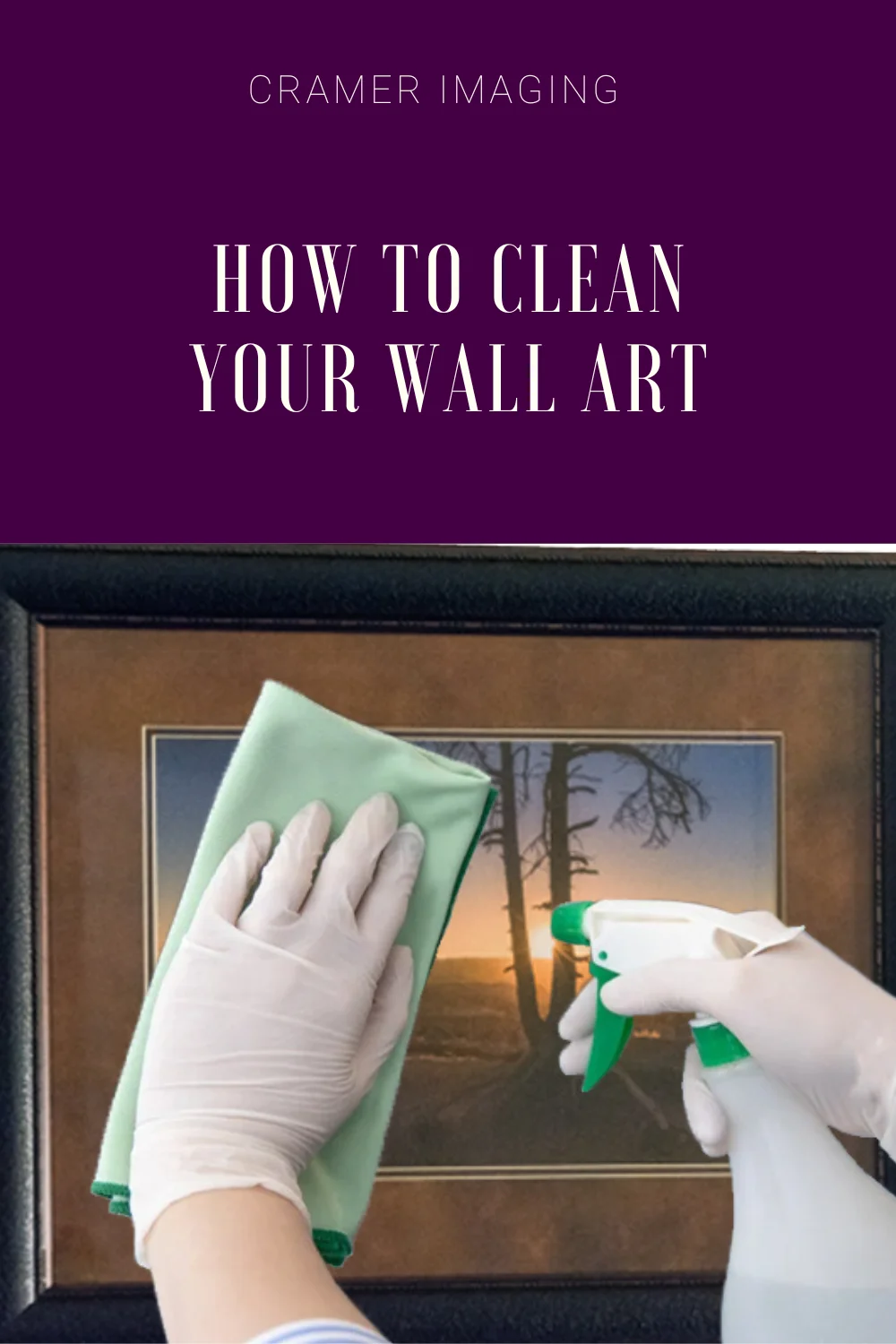How to Clean Your Wall Art
Shop

Now that you have some beautiful fine art on your wall, it’s gonna get dirty. Life is going to happen. You can’t help that, no one can. So, how do you get your artwork clean again? Thankfully, Cramer Imaging has a couple of tips to help you out with this dilemma. Today we discuss methods to clean your wall art.

First, most of the fine art available for wall hanging comes framed and behind glass or a glass substitute like acrylic. This will make routine cleaning easy. You will simply dust the frame and use a glass cleaner on the glass. This method will work well for lots of cheap fine wall art such as reproduction prints and low end photography. However, for something which is expensive, priceless and irreplaceable, or not a low end art medium, you will need a different cleaning process.
At Home Methods

You can clean your fine art frames with dusting or even a damp cloth. That will work just fine. However, when it comes to the artwork itself, you can find all kinds of suggestions online for different methods. Our recommended method for cleaning wall art, such as an oil painting, is to use a soft-bristled synthetic brush.
With this brush in hand, you will be able to remove dust and cobwebs easily without damaging the paint of your art. If you make sure that it is soft-bristled, you won’t scratch things or even cause paint to chip.
High end and important photographs can be gently cleaned with a damp soft cloth. Microfiber is one kind of soft cloth which should work for glossy prints. For more art rag papers, you cannot use water at all. For those, you will need a dry soft cloth.
Also, avoid any and all cleaning chemicals on the art directly. They can cause damage which can be irreparable. This includes soaps, window cleaners, alcohol, and lots of other chemicals on the market. Also, avoid food products as well. Do you really want to add in the liquids from fruits and/or vegetables or the crumbs from bread into your picture frame? I thought not.
With these methods, you can clean your fine art as often as you feel it needs it. The more frequent, the better in most cases. It will prevent the buildup of deep layers of dust and other things like hair.
When to Get Professional Cleaning
If you have much of any cleaning needs above and beyond what I mentioned before, you will need to seek out professional cleaning for your fine art. If you find that you have paint which is chipping or alligatoring, yellowing, or lots of other kinds of cleaning issues, you need a professional fine art cleaner.
Getting your fine art cleaned comes with an expensive price tag, I know that. This is why you don’t get your fine art professionally cleaned very often. You only pursue this option when it’s necessary. However, when it is necessary, take comfort in knowing that the right professional will know what to do with your fine art to return it to its former glory.

Often times, you might inquire about a bulk rate if you own a lot of pieces which require professional attention. It’s something to keep in mind which might ease a tight budget. Make sure to ask when selecting your professional fine art cleaner.
Conclusion
Cleaning your fine art for the wall is a simple process of dusting and glass cleaning. Much beyond that, or for delicate cases, you should seek out professional help. So this means that adding a fine art cleaning routine into your regular cleaning regime should not be a difficult matter at all. Keeping your wall art clean will assist in your continued enjoyment throughout the years.
Occasionally while cleaning, you can create a stretch bubble on canvas piece of fine art. It can be frustrating but it’s not the end of your canvas art. So tune in next week for a cheap way to solve this problem at home.
Best Sellers
Cramer Imaging Newsletter

Receive monthly updates in your inbox from us.






